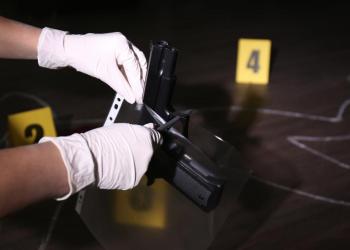
Automobile Exception to Search Warrant Rules: In a Warrantless Search, Probable Cause Still Required
The automobile exception to the search warrant requirement allows for a warrantless search of a vehicle anywhere in that vehicle for which there is probable cause to believe seizeable items are located.
On April 1, 2021, detectives from the Stockton Police Department were surveilling a gang funeral expecting criminal street gang members connected to prior shootings to be in attendance. The detectives were in plain clothes and in unmarked police vehicles. One detective recognized a particular juvenile based on photographs he had seen and prior conversations he had had with other detectives after a recent shooting at the juvenile’s home. He was aware that the juvenile was on searchable probation with a firearm restriction. In his observations of this juvenile, the detective believed that he was carrying a firearm.
This conclusion was based upon the detective’s observation of an unidentifiable object protruding from the juvenile’s right front waistband as the juvenile held onto that area as he walked. The juvenile also walked as if he was trying to prevent the object in his waistband from causing his pants to fall.
Another detective on the surveillance team confirmed via radio broadcast that he was able to clearly see a black handgun in the juvenile’s waistband. This juvenile was further observed contacting another minor, later identified as the defendant, Hilario Leal, Jr., and a woman. The three of them walked over to Leal’s car.
Although the juvenile walked toward the car’s closed trunk at one point, at no time was the trunk observed to be open. The juvenile then walked back to the gravesite as Leal and the woman drove away. It appeared that by the way the juvenile was holding his waistband that he was still carrying the firearm. Leal was soon observed driving back to the gravesite as the juvenile approached his car a second time.
This time, the juvenile, still holding his waistband, walked toward the car’s trunk. Although the detective’s view “was kind of obstructed for 10 to 15 seconds,” the trunk was never actually observed to be opened. The juvenile then walked to the rear driver’s side door, still with his hand on his waistband. He opened the door and sat in the rear seat while “appearing stiff in the waistband area unlike a “normal person would sit down.”
He was then observed bending at the waist and laying down on the seat. He then reached toward his waistband while turning toward the back side of the front seat, away from the detective, and moving his hand toward his chest. The juvenile then got out of the car, no longer appearing to be stiff.
These observations, in conjunction with the fact that the juvenile was observed adjusting his pants and walking away from Leal’s car without holding his waistband, led the detective to believe that the juvenile had just placed the firearm underneath the front passenger seat in Leal’s car. The detective broadcast these observations over the radio.
As Leal drove away from the area, the detective requested via his radio that officers follow Leal until an enforcement stop could be made by a marked patrol car. Leal was followed to a barbershop, where he went inside. A uniformed officer in a marked patrol car followed Leal to the barbershop and detained him when he came out.
When told by the officer that he was going to search his car, Leal “became nervous,” and told the officer that he did not want his car searched. The officer proceeded to search his car anyway. However, no firearm was found under the driver’s seat or anywhere else in the passenger compartment.
So, the officer extended his search to the vehicle’s trunk where he found a loaded Glock handgun. Leal was charged in state court with various gun-related offenses and his motion to suppress the firearm was denied. He pleaded no contest to being a felon in possession of a firearm. Sentenced to one year in county jail, suspended, with a year of informal probation, Leal appealed.





